TOOLS
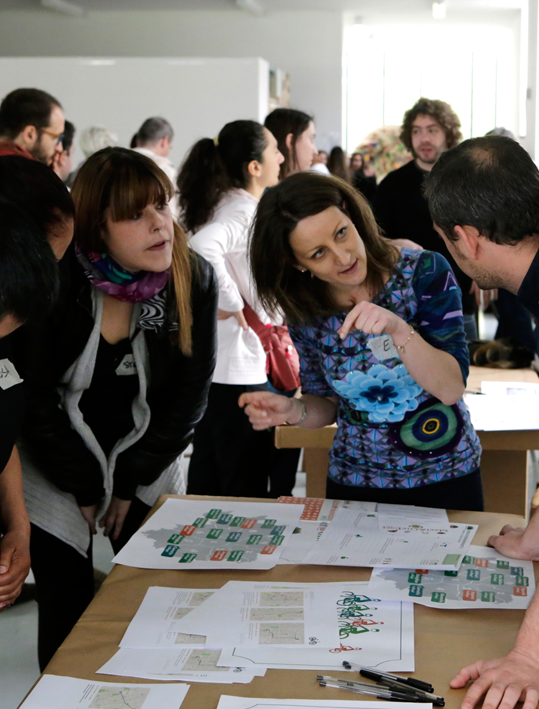 | The Community Start-up Process Tenants involved in social and collaborative housing interventions become part of a residential project that is based on the sharing of spaces and services aimed at optimizing day-to-day living and improving their own personal living conditions. To facilitate this process, it is necessary to support the people and groups in the construction of their own neighborhood by providing them with enabling systems. To do this, FHS has fine-tuned a pathway that consists of 10 plenary sessions and the same number of group meetings; it starts around 6 months before the first tenants move in and finishes when the residents have been living in their homes for 1 year. This is a process that has the objective of equipping the tenants to be able to plan the use of the common spaces available to them, and to define the rules that will govern the use of these spaces. To achieve this, several tools have been devised for the design and prototype of the activities, a web platform to manage the project and facilitate communication among the residents, and tutorials on how to efficiently perform each activity in a short time and on how to structure the governance. |
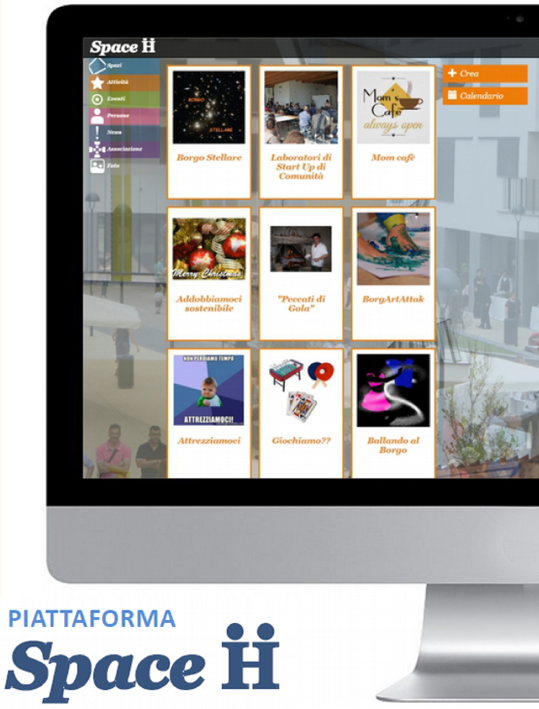 | SpaceH | The web platform for social housing SpaceH is the web platform used to manage the shared spaces and to organize the activities inside social housing contexts. The web platform consists of 2 areas: one public and one reserved for use by the community. The public area, run by the Social Manager, is accessible to everyone and its purpose is to give visibility to the events of particular importance that have been organized by the residents and to those initiatives that are open to the public, to promote possible calls for applications and new projects, and to tell the story of the social housing project and of the community. The area reserved for the community’s use is only accessible via registration, and its purpose is to assist the community in organizing itself and in managing the shared spaces and equipment. The reserved area includes a calendar which allows the users to have a complete vision of the initiatives that are taking place in the coming months or weeks. Each user can book the spaces via the web platform, and an invoicing system keeps track of the usage time and calculates the potential contribution that the user should make to the residents’ association. In the “Spaces“ section, the user can view the list of spaces available in the complex they live in, and can access relevant information such as: floor plans, rules, available equipment, and updates to the log book (which details cleaning, damage and status of consumable products). The section “Events and Activities” allows a single user or group of users to manage the activities taking place. The user can see all information relating to the single initiative such as: the content, the frequency, the names of the contact persons – with a direct link to their personal profiles – the list of participants, and any available photos and documents, which can also be downloaded. In the “People” section, users can see the profiles of everyone who has subscribed to the web platform. Each person’s profile can contain contact information, personal information, activities they participate in, and photos etc. The web platform is also enriched with additional functionality: a news page – which functions like an electronic noticeboard, where the staff can publish notifications and important communications to the residents – and a page dedicated to the residents’ association. In addition to being of great organizational assistance to the users, the web platform is also a support tool for those who manage the residents’ community because it offers the possibility to collect, in a timely manner, useful information and notifications which enable them to carry out any specific interventions that may be required. The data that is collected in the database is also used for monitoring operations and for evaluating the social impact that the community has on the local neighborhood. The SpaceH platform has been in operation since 2015, and has been used in the projects “Cenni di Cambiamento”, “Borgo Sostenibile” and “Vivo al venti”. It is visited and used on a daily basis, and is also utilized to promote the activities of the resident communities to the outside world. The feedback from platform users over time has enabled improvements to be made to the functionality of SpaceH, but the tool itself is in constant evolution with the implementation of new functions to make it even more user-friendly. |
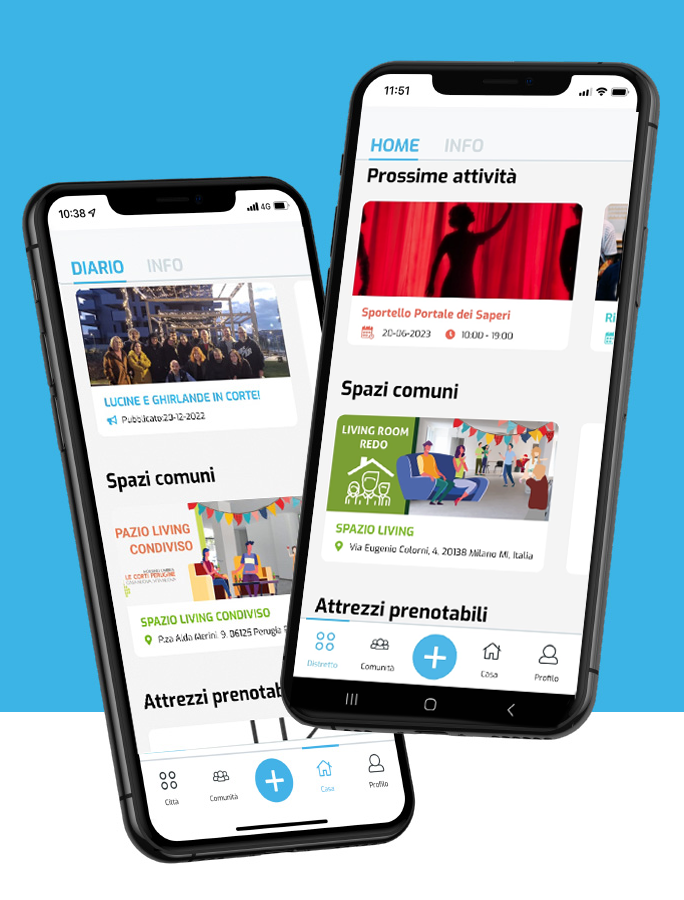 | Planet app | the app for getting the most out of your neighborhood Over the last few years, Fondazione Housing Sociale has created a series of tools to facilitate residents along the start-up pathway, with the aim of planning the first collaborative activities together, optimizing the use of the common spaces, and defining together the rules that will govern these. Thanks to FHS’s on-the-ground experience in supporting local communities and Planet’s innovation, this app was created with the aim of enabling people living in collaborative contexts to make the most of their neighborhood, and to get qualified help in structuring and coordinating activities. In addition, the app offers some features to enhance life in your neighborhood, such as the ability to: • access discounts, special offers and offers from local traders and services; • share a geo-localized request for help to your contacts • stay connected to your home, to be able to set and monitor the temperature of your apartment even from a distance, and to monitor your energy consumption and choose how and when to save. The app consists of 5 main sections, each easily identifiable: City: dedicated to your local neighborhood, and to useful information Upon opening the application, you land on a homepage that contains a summary of the latest news, upcoming events in the calendar, information on the spaces and on the residents groups … to give you an overview of what’s happening in your local neighborhood. In this section, you will also find pages dedicated to internal communications within the building: such as messages from the Social Manager and useful information for residents. Community: dedicated to the community involvement of the residents This section mainly contains content generated by the residents themselves, where there is the opportunity to book common spaces, borrow useful tools and manage the sharing of such, as well as look for and/or offer your own skills and knowhow. There is a subsection dedicated to news relating to the neighborhood, smart tips and interesting services. The Promo feature gives access to discounts, time-limited promotions, and information on offers from local traders and services. Last but not least, there is a space dedicated to promoting activities targeted at specific groups, such as activities for children, community gardening, tools etc. … with the ability to place links directly into chats or groups that are already active on other social networks, so that other residents are encouraged to participate in these collaborative activities. Home: dedicated to monitoring your own home The HOME section gives you the opportunity to stay connected to your home at all times, and to verify energy consumption and building expenses, as well as to send any reports of malfunctions. Profile: dedicated to sharing user information This is the control panel where you can find your personal data and directly manage your account information. You can also search for other users by skills, interests, and personal data, so that you can find out about your neighbors and connect with people who share your interests. Quick actions: all key actions are just a click away This section groups together the most frequent actions clicked on by users. This is a convenient shortcut to the features of the app! The app is available for Android and iOS operating systems, and is completely free! Download the Android app Download the iOS app |
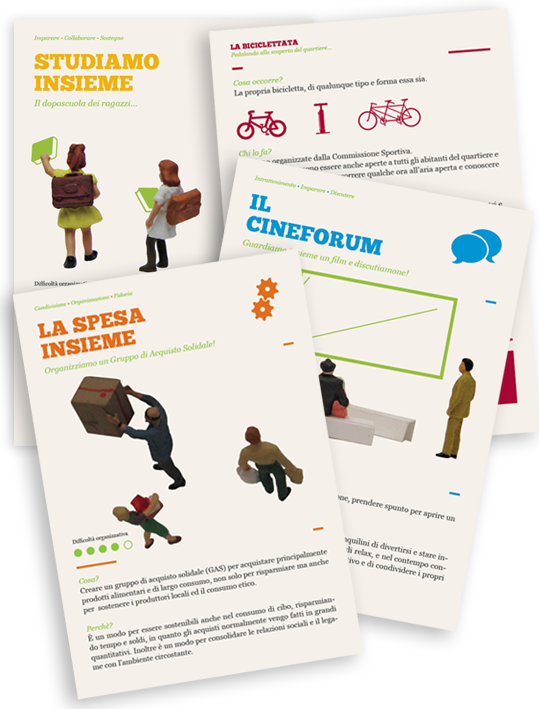 | Social cards Social Cards is a deck of 30 cards divided into 4 categories (Optimizing Resources, Taking Care of the Little Ones, Socializing and Parties, Hobbies and Relaxation) that are designed to facilitate the choice of spaces and services within the social housing projects, services in which the collaborative aspect is of prime importance. The specific aim of the Social Cards is to stimulate discussion and to facilitate the choice of those activities that the residents then design and generate together. 1) Methodology for using this tool in the selection process Split into groups of no more than 20 people, the participants, gathered around tables, discuss together the possible activities that could be set up within the project, also on the basis of the shared spaces available to them. The group begins turning over the activity cards in the center of the table, only choosing those which they are most interested in. If the group selects more than one activity of interest and this results in lengthy discussion, each participant is given 3 Post-Its numbered “5” “3” and “1” which they use to vote for their 3 favorite activities; the activity that receives the highest score is the one that will be developed by the workgroup. 2) Methodology for using this tool in the Community Start-up phase The same tool is used by the residents in Workshop 3: Designing Future Activities in the Community Start-up Process, where themed work-tables are prepared ahead of time (examples include: Childcare, Culture, Tools of the Trade, Daily Needs, Leisure Activities …); each table then uses the Social Cards that relate to the specific topic. The residents are free to choose the table they wish to work at, based on their interests and skills. |
 | Video Tutorials The meetings that make up the Community Start-up Process follow an exact structure: for each step it is necessary to provide a clear, direct explanation that enables the participants to understand the general purpose of the activities that are being proposed, and that gives reassurances to the residents about the commitment that is expected from them. To facilitate this, several short tutorial videos have been produced that are presented during the meetings. The tutorials illustrate how to reach the predefined objectives through the use of footage of previous experiences and through animations. It is the residents who have already been through the process who “pass on” their experience and talk about the most critical stages and how they reached their objectives. This trust in the project’s efficiency, in addition to being transmitted directly to the new residents through personal testimony, is implicitly expressed by the tool that measures the level of organization involved. This last point is very important, because participants need to feel that they are being accompanied by a method that is both precise and reliable. |
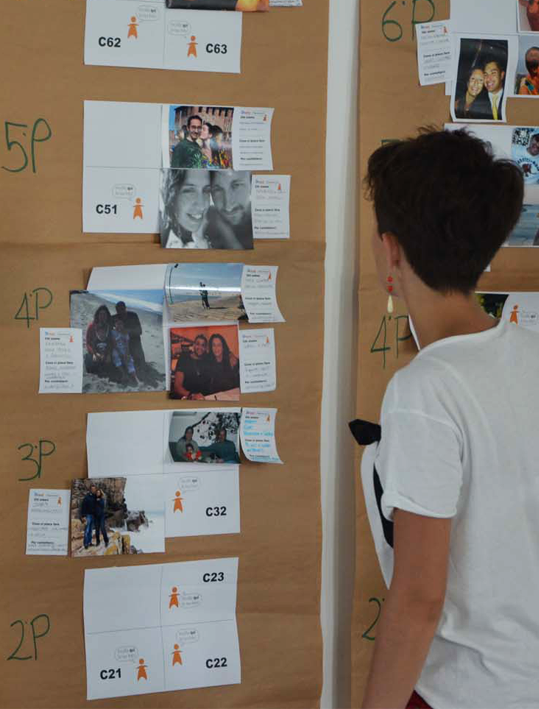 | Stacking Plan The series of meetings that takes place before the residents move into the apartments is called “Warm up”. In addition to offering the future tenants group activities to help them settle into their new homes, it also encourages them to get to know each other. In the first of these meetings, the future residents have the possibility to meet their fellow tenants before they move in, and to find out who their immediate neighbours will be. This process was inspired by a two-dimensional graphic that is used in real-estate circles which enables us to see different information about the tenants in complex residential contexts, and which allows us to provide a tool to help future residents visualize the composition of their new community. A simplified illustration of the layout of the apartments is shown on paper, and each family unit is asked to identify their own home, and to attach a photo or drawing of themselves and also a brief note of self-introduction. In this way, everyone starts to construct a mental picture of the community that is being created. This work is then uploaded to the web platform and made available to the users; this enables the residents to get to know the names of the other residents and the composition of the other families. |
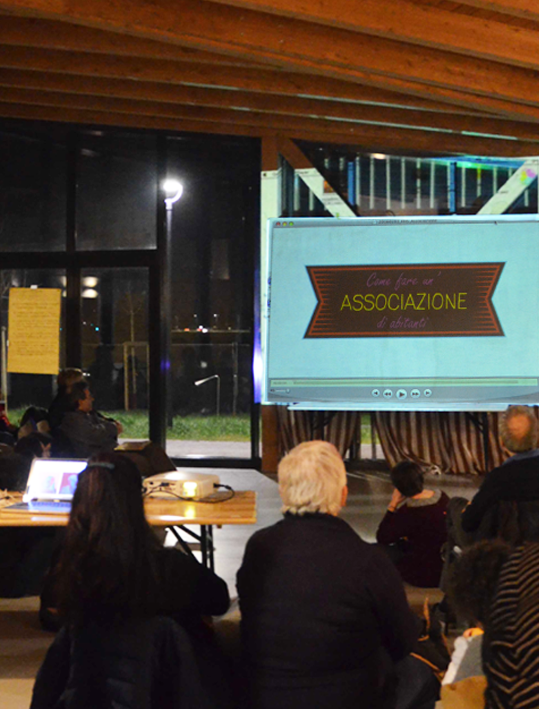 | Household Budgeting and Planning Workshop One of the most common types of arrears to be found in a social housing project may be defined as “discontinuous” or “sporadic” payments: the families may find it difficult to manage their financial resources and to manage their outgoings, and they thus may find it difficult to pay the rent if they find themselves faced with an unforeseen expense. To improve the selection process and, at the same time, strengthen the candidate’s level of financial education, several training and orientation sessions are organized which the candidates are invited to participate in. In each workshop, the plan is for the “teacher” - generally an expert from the banking or finance sector - to hold an orientation meeting for smaller groups (20-30 people) during which the following topic areas are explored: • family budget and management of savings; • correct management of financial debt; • dealing with emergencies and restructuring debt. The methodology used in these meetings is active debate and group discussion, which allows us to break down taboos relating to financial matters and to have a discussion about lifestyles and family money-management through looking at an analysis of monthly expenditure. In this phase, collaborative good practices are introduced which can help people to save, informational and educational materials are distributed, and participants are invited to take part in a brief exercise to draw up a family budget. |
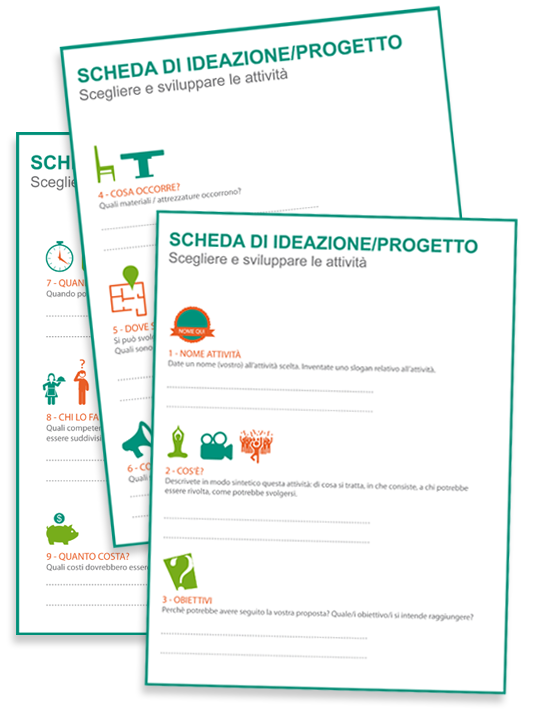 | The Design/Generation Card The Design/Generation Card is presented as a step-by-step guide to assist in the design of the collaborative activities that the participants generate. This tool helps the residents to brainstorm activities by answering several key questions, such as: “How might the chosen activity be put into practice?” “What impact will it have, what potential difficulties relating to its management and the effort involved might it bring to the living environment within the social housing project?” The Card consists of various questions, explained and enriched with examples, plus space for compilation. After the participants have selected their activity using the Social Cards, they develop it following the guidelines included on the Design/Generation Card. The workgroup comes together and discusses the idea in more detail, concentrating on the main aspects, and getting inspiration from the questions that are on the Card: What is it? Where does it take place? What is required? When should it be done? Who will do it? How much will it cost? Why do it? These questions stimulate discussion and guide the group towards defining the main features of the service. As a final step, the workgroup is asked to choose a name for their activity and to reflect carefully on it, both with regard to the positive effects and to potential issues or problems that may arise, and how to deal with them. |
MANUALS
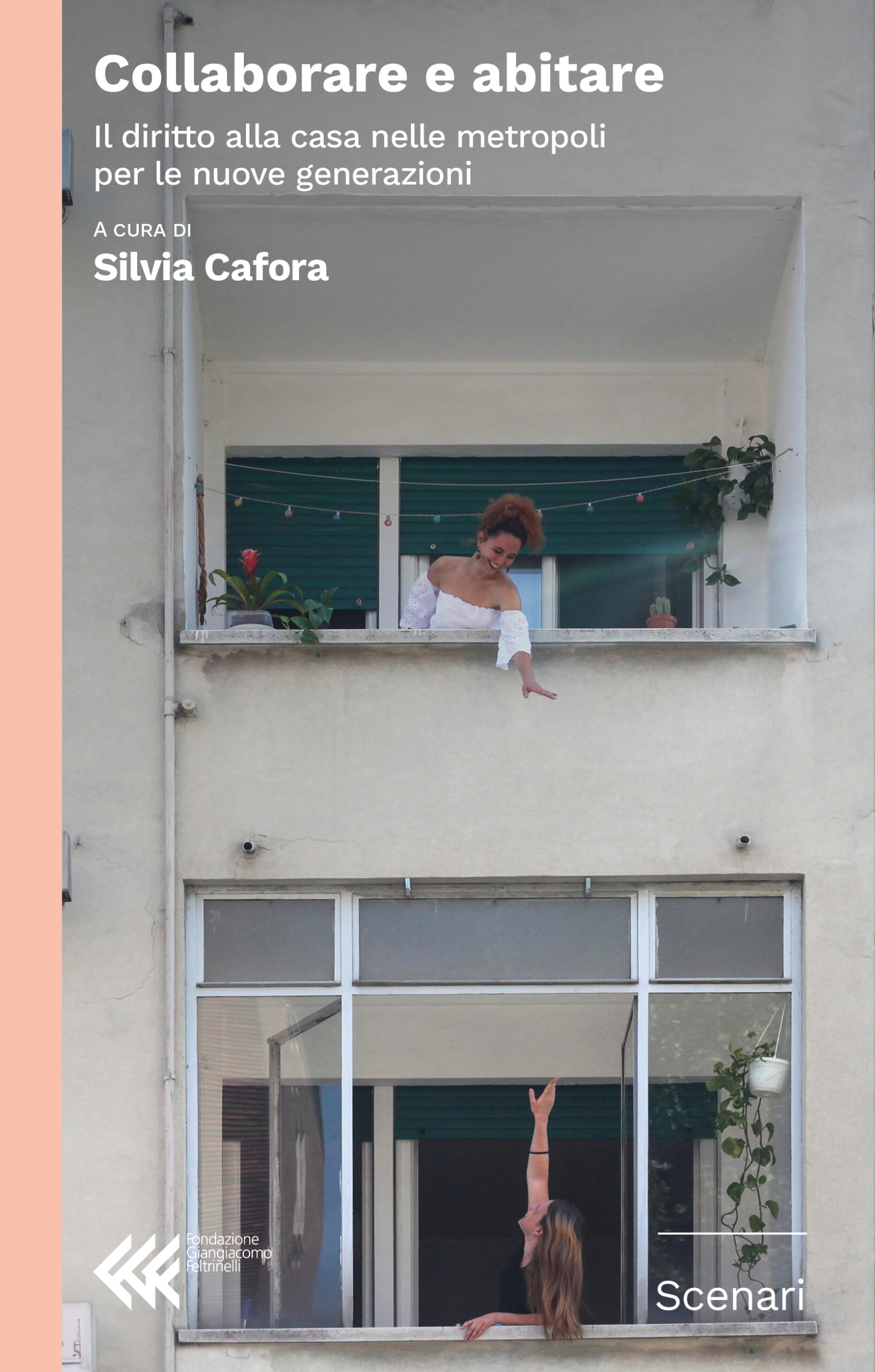 | The research project Abitare Fluido as reported in the publication “Collaborare e abitare” How do young people live and want to live in cities? What are their aspirations and housing prospects in relation to the transformations that are taking place in the economy and in the world of work? Is it possible to imagine fluid, flexible, multi-territory housing models that are able to adapt to the different stages and needs of life? These questions were at the base of the research project Abitare Fluido, the results of which are presented in the book “Collaborare e abitare” (“Collaborate and live”), published by Fondazione Giangiacomo Feltrinelli. Through a series of workshops and a questionnaire, the research project directly targeted around 500 young people aged between 24 and 38, to find out about their desires and expectations for housing, involving them personally in a collective reflection to work together on alternative housing models, starting from the idea that the traditional answer to the issue of housing for young people is not the only possible or desirable one. The article can be downloaded free of charge at www.fondazionefeltrinelli.it. The qualitative survey revealed a general change in the housing needs of young people, and a high degree of interest (41% of participants) in alternative housing models, based on cohabitation, the sharing of spaces, and collaboration between people. The main reasons for choosing a collaborative housing model include: economic savings, access to a new experience and to environmental sustainability, and the opportunity to share interests and passions. During the workshops, young people were called upon to hypothesize together a model of “fluid living” (Abitare Fluido) that was characterized by a strong degree of sharing and was designed to offer young people (but not exclusively young people) the opportunity to live in an extended housing system. The hypothetical system would consist of a constellation of housing spread out across the suburban area, with related work spaces (such as offices and production spaces) connected to a Hub (shared accommodation) in the city, connected with services, commercial spaces and co-working spaces that are available for use by the inhabitants of the system. The research project highlighted the need to overcome the classic dichotomies of “rent vs. buy” and “the home as workspace”, and called for consideration to be given to the possibility of incentivizing the emergence of a new line of housing services that is capable of responding to a more flexible demand, in terms of both location and time, and that allows for greater mobility and ‘nomadism’ in the area. The survey was promoted and supported by Fondazione Cariplo, Fondazione Compagnia di San Paolo, Fondazione Sviluppo e Crescita CRT, Fondazione Housing Sociale, Confindustria Assoimmobiliare, Fondazione dell’Ordine degli Architetti Milano, and Spazio Aperto Servizi Cooperativa Sociale ONLUS, in collaboration with Ordine Architetti Torino, Ordine Architetti Milano, Future Urban Legacy Lab - Politecnico di Torino, Fondazione Impact Housing, and Torino Urban Lab. |
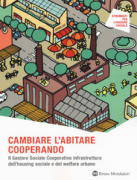 | Changing Housing through Collaboration In recent years, housing has been a driving factor behind many initiatives aimed at guaranteeing the right to an accessible city and improving the quality of life in urban and suburban contexts. For over a decade, in the most advanced experiences of social housing, both in Italy and in Europe, there has been a widening of the scope of housing to extend to services and collaboration, in a dimension that is open towards the urban scale and proposes itself as a dynamic welfare system. The Social Manager operates within this complex system, integrating the "hardware" and "software” skills of contemporary living and creating the social infrastructure which supports the new paradigms of response to both housing needs and social cohesion. Legacoop Abitanti, together with Finabita, the Fondazione housing Sociale and the Politecnico di Milano, have invested in a workshop pathway which has taken on board the requests for "renewal and development of the process" and has marked the beginning of a general reflection that led to the writing of this publication. This book is available to purchase through www.legacoopabitanti.it |
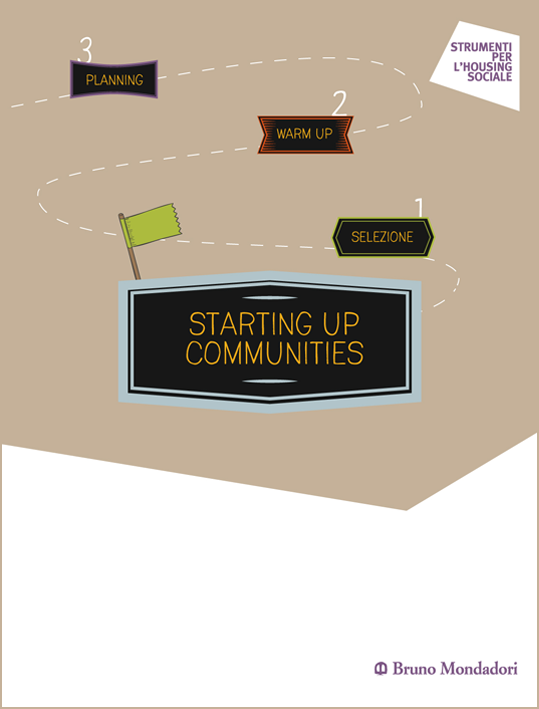 | Social Housing Tools | Starting Up Communities A framework is taking shape for a new culture of living both private and public spaces: a collection of experiences that we technically call active and collaborative well-being, in which people organize themselves to improve an aspect of their own living conditions by putting in place collaborative and sustainable solutions to help achieve their objectives. The result of this interaction is to make daily life more efficient and pleasant, and to manage and respond to certain strategic demands of everyday life by reducing waste and optimizing the time and resources available. Social Housing represents one of the environments in which these new ways of doing things are expressed. This manual illustrates the results and methods that have been adopted in several Social Housing projects. Download the document here |
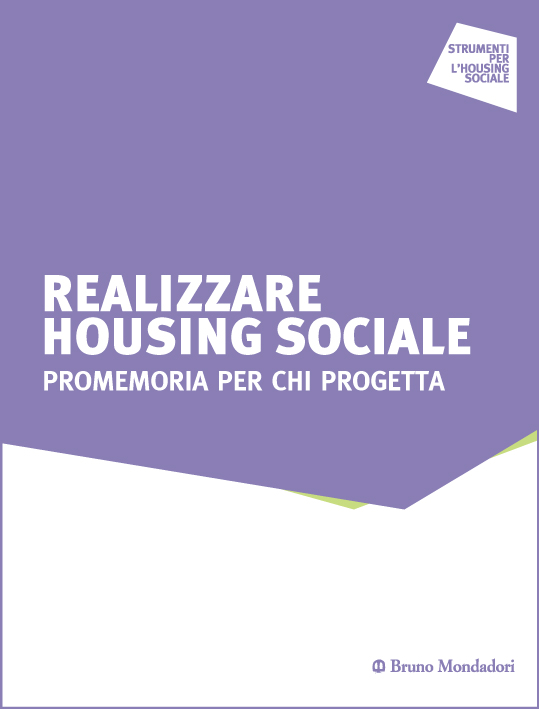 | Social Housing Tools | Social Housing - A Handbook for Designers This publication offers a collection of technical and design ideas for the development of a Social Housing project that meets the demands for quality of the domestic space without neglecting cost-efficiency in construction. These are primary needs, both of which require the application of a set of fundamental rules regarding the design of domestic space. This text, therefore, aims to provide designers with guidelines that enable them to transform the detailed design of a dwelling into a project that pays attention to the quality of contemporary everyday living. The book is the result of reflections that have been shared with the professionals, investors, fund managers, and residents who have participated in Social Housing projects created within the SIF (Integrated System of Funds) environment, and is organized in three sections: • Section 1 is dedicated to the livability and usability of the living spaces • Section 2 is reserved for the non-residential spaces of the residential complex • Section 3 focuses on case studies as contributed by several professionals. The document can be downloaded here |
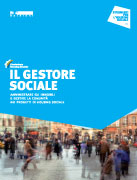 | Social Housing Tools | The Social Manager This manual, the first of its kind to be published in Italy, describes in detail all the processes that come under the Social Manager’s responsibility, and any variables. Starting with the concrete projects that FHS is developing in Italy, the manual then moves on to examine, in great detail and with appropriate examples, the decisions and practices that are entrusted to the Social Manager. This manual can be purchased online from Altreconomia |
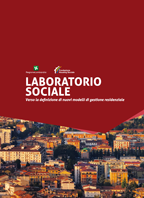 | The Social Laboratory | Towards the definition of new models of real-estate management This manual is the result of a Social Laboratory process that was promoted and activated in joint agreement between the Lombardy Region Department of Housing and FHS. The fundamental themes of housing stock management are addressed, using a multi-dimensional integrated approach which aims to systemize the management of both the stock and the community of residents, with social sustainability being the primary objective. This manual can be downloaded here |
 | Project 10,000 | Design Models and Construction Systems for Social Housing CDP Investimenti SGR, in collaboration with Investire SGR and FHS, promoted and financed a research and development project called “Project 10,000” which was tasked with the identification and dissemination of design models and construction systems aimed at optimizing, in several respects, the creation ex novo of Social Housing interventions. The results of this work, which lasted over a year, have been collected together in these Guidelines, which aim to facilitate dialogue and relationships between the developers and the designers and construction companies involved in the projects. “Project 10,000” is an open-source project, both in the sense that it is available to anyone who could benefit from it, and in the sense that its contents can, over time, be evaluated and enriched with the concrete experiences that are developed in the context of its application. |
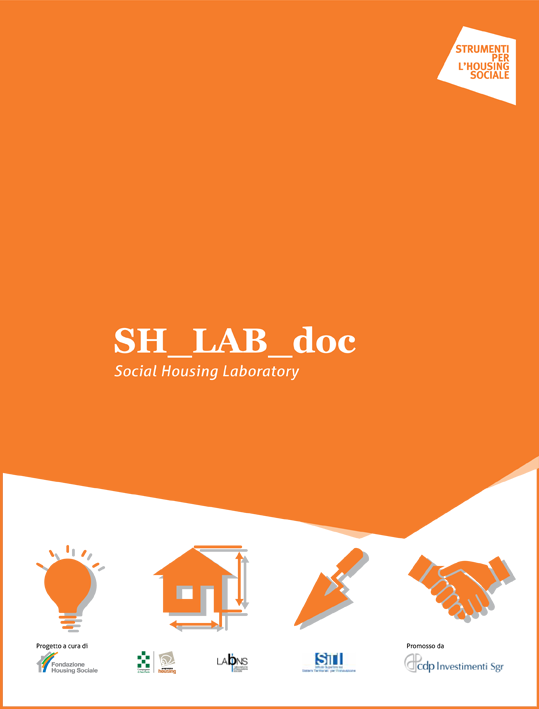 | SH_LAB | Tools for Social Management FHS and Programma Housing of the Compagnia di San Paolo - LABINS - SiTI designed and organized a series of meetings entitled “SH_LAB Social Housing Laboratory, Tools for Social Management”, which saw the participation of the leading operators in Italy, Asset Management Companies and Social Managers, involved in the creation of Social Housing projects, especially those financed within the FIA framework. The Laboratory followed a process of co-design of the profile and tools of the Social Manager, with the aim of defining a common horizon within which to operate, with respect to both long-term rent and temporary rent. The project was promoted and supported by CDP Investimenti SGR SpA, and the main themes that arose and were shared by the group of operators involved were collated in the document SH_LAB_doc which is published here. This document can be free downloaded from CDP Investimenti SGR SpA |
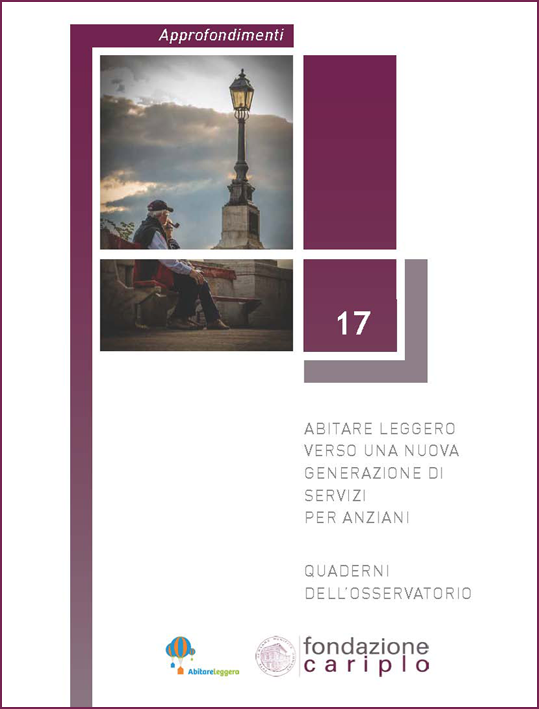 | ABITARE LEGGERO – “Light Living” | Towards a new generation of services for seniors The demographic and social evolution of the family structure in Italy has caught the attention of everyone. The focus is not on negative changes; Italians are living longer, they are reaching old age in a better state of health, and they can enjoy their old age to the full. This Notebook summarizes the results of “Abitare Leggero”, a research project that explored this topic in depth, and its practical application in existing structures within Lombardy. The conclusions it draws, which are shared by all project stakeholders, put forward courses of action, proposals for regulatory review, indications for managers, together with three possible development models for new “light” residential solutions for seniors. This manual can be downloaded free of charge from Fondazione Cariplo |
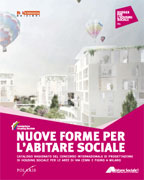 | 1 | Social Housing Dossier | New models of social living Catalogue raisonné of the international Social Housing design contest that was held for two Social Housing complexes in Milan; via Cenni and Figino. This book contains a selection of the most noteworthy projects grouped according to certain specific common elements of the urban residential interventions: the typology of the building, the design projects for the open spaces, for the semi-public spaces, for the dwellings, and for the exterior of the buildings. This book can be purchased online from Altreconomia |
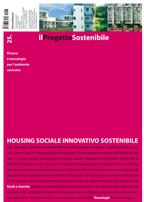 | The Sustainable Project Social Housing is an integrated program of interventions that includes the accommodation offer, services, actions and tools that are aimed at those people who are unable to satisfy their housing needs on the market, either for financial reasons or due to the lack of availability of a suitable solution. The aim is to improve and strengthen the housing conditions of these people, through the establishment of a quality residential context within which it is possible not only to access housing at an affordable rent, but also to actively participate in the experience of new or reinvented ways of living: housing models where the residents themselves are called upon to create a sustainable community. This document can be downloaded here. |
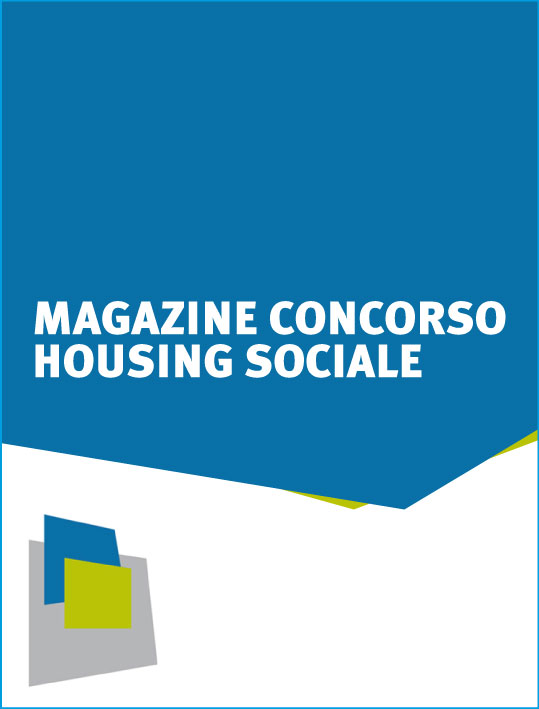 | Social Housing Contest Magazine The magazine was chosen to be a periodic informational tool for the promotion of the international design contest, and of all the initiatives that go with it, curated by FHS. Each edition of the magazine is dedicated to a member of the contest jury and, in addition to the juror’s profile, showcases his/her specific competences in the Social Housing field, together with the description of an intervention which has been chosen as a reference model for the design or management solutions that were applied. The documens can be downloaded here: No. 1 – 2 – 3 No. 4 – 5 No. 6 – 7 – 8 |







